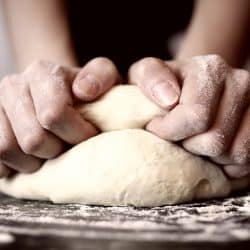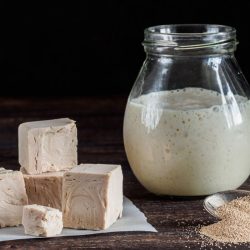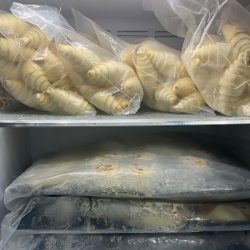Cooking a fresh loaf of bread is always better than store-bought. But, making it from scratch can get a bit tricky. If you don't want it to rise right away, putting it in the fridge is a way to slow the process. Though, there are a few things you should know to ensure it survives the night. So, if you'd like to know how to store bread dough overnight, let's find out!
If you're looking to store bread overnight, that means you want to postpone baking. To save the dough for the next day, you should knead it first. Then, take the dough and place it in a lightly oiled mixing bowl. The oil is to prevent it from sticking to the bowl. Finally, cover the top with plastic wrap and refrigerate overnight.
Now that you know how to store bread dough overnight, there might be more you want to know. For example, is it possible to bake it straight out of the fridge? How can you tell if it has risen enough? These are all crucial aspects of making the perfect loaf of bread. If you'd like to find this out and more, keep reading ahead.
![Cooking dough for pastries with a rolling pin on the back, How To Store Bread Dough Overnight [A Complete Guide]](https://kitchenseer.com/wp-content/uploads/2021/09/How-To-Store-Bread-Dough-Overnight-A-Complete-Guide-667x1000.png)
Can You Leave Bread Dough To Rise Overnight?
The first concern is about leaving it overnight. As you might already know, the yeast will continue to rise in the fridge. On the other hand, you might want to know if there's a way to leave it at room temperature overnight.
To answer the latter first, no, it's not possible to leave the bread dough at room temperature overnight.
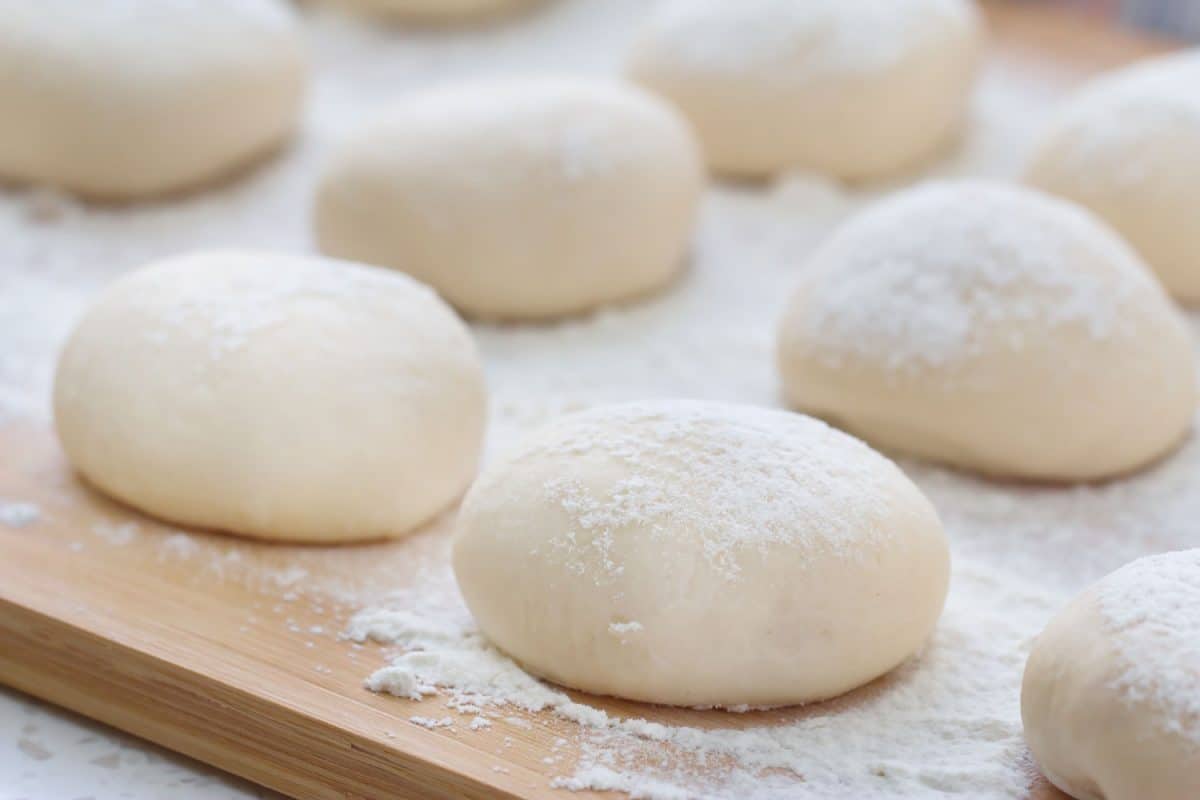
The reason being that yeast tends to be more active in warm temperatures. If you leave it on the kitchen counter overnight, it will continue to rise without being slowed down.
Overnight at Room Temperature
If we want to get more specific, room temperature is somewhere around 68-72 degrees Fahrenheit. Regarding the yeast, the ideal temperature to rise is about 75-78 degrees Fahrenheit.
Room temperature isn't the ideal range. But, it reaches close to it.
It only takes two to four hours for the bread to double in size. So, if you leave it out overnight at room temperature, you won't have anyone to look over it. As a result, it will rise too long and collapse on itself, leaving you with a worse flavor and texture.
Refrigerating the Bread Dough
To counteract the yeast, you will need to lower the temperature to slow down the rising process. Maybe you don't want to bake the dough right away.
For that reason, you decide to refrigerate it. Still, that leaves us with the question of how long will it take to rise in the fridge?
After all, cold temperatures do not kill the yeast. Instead, it slows it down. As some suggest, refrigerating the bread dough will leave it to rise over a 12-24 hour time period.
Slowing It Down More
Yet, there are some interesting techniques out there if you want to slow it down further. As others have experienced, you can also opt to use less yeast in the bread dough.
If you put less yeast in the dough, you're stretching the time for it to rise. So, if you don't need to bake bread right away, don't use too much of it.
The Proper Way to Store It
Regardless of the method, storing it requires a few simple steps. The materials you will need are a large bowl, oil, and plastic wrap. Start by lightly oiling the bowl. This step is necessary to prevent the dough from sticking.
Place the bread dough inside the bowl. Finally, cover the top with plastic wrap. Depending on how much yeast you use, the bread will rise slowly overnight for 12-24 hours or more.
Do You Have To Cover Bread Dough With Plastic?
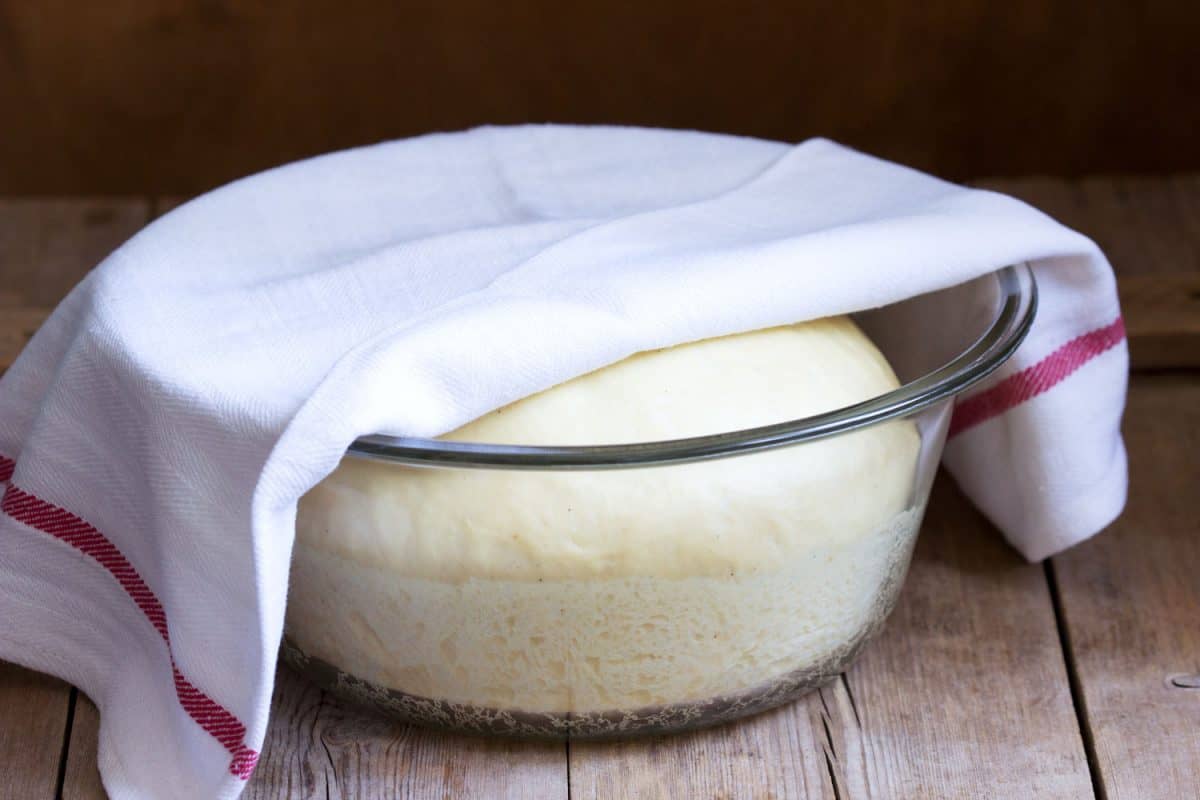
Now, to some, plastic can be a concern. So, you might be wondering if you can use an alternative to plastic wrap. The quick answer to it is, yes, there are some alternatives. But, if you'd like to know the purpose of it, let's take a deeper look.
Why It's Covered
If you've been around for some time, you might have heard past recipes calling for you to cover the bread dough with a wet towel.
You might have questioned it at the time or not, but the towel had to be wet to keep the dough moist. Nowadays, recipes will call for you to use plastic wrap or another alternative.
The difference between the two is one is wet, and the other is not. As users suggest, towels allow air to pass through. So, in some climates, it will dry out quickly. In this situation, you might need to dampen the towel multiple times.
The plastic wrap keeps the warmth contained. It also keeps moisture inside without the need to dampen it again. Though, if you don't like using plastic, there are plenty of alternatives you can use.
Alternatives
Any material that doesn't allow air to pass through should suffice. You can use pot lids for large containers. For small containers, you can opt to use a serving plate normal way up. It shouldn't be bottom-side up because the plate can slip off.
Some even suggest using a shower cap to cover the top! Anything can work as long as it prevents the dough from drying and developing a crust.
Can You Bake Cold Bread Dough?
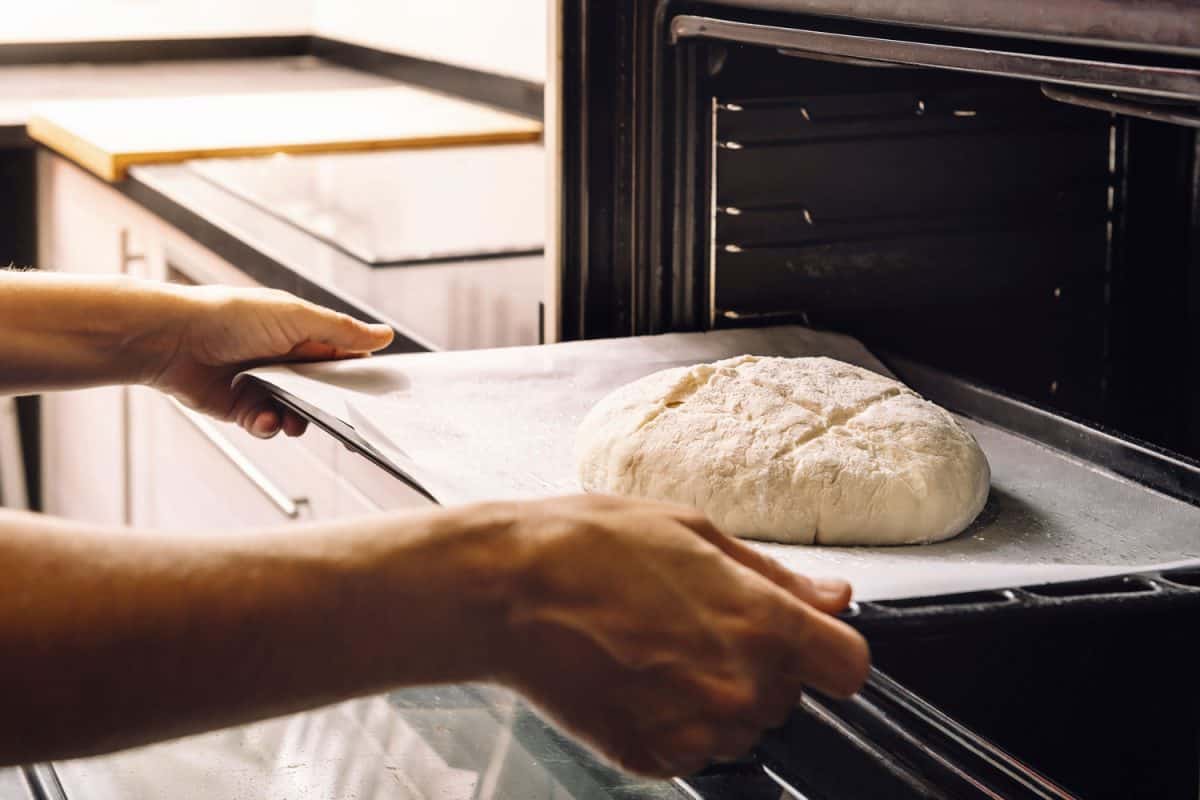
Now comes the concern of baking the bread dough straight out of the refrigerator. It's understandable. The dough is cold. So, one might guess that it will have trouble baking correctly.
That isn't the case with bread dough if you're refrigerating it for the final proofing. As some bakers suggest, baking it straight out of the fridge in this situation does not affect how well it comes out.
As you can guess, the reasoning is because of the yeast.
Why You Should Bake Straight Out the Fridge
Yeast becomes active in a warm environment. And, as we covered above, the ideal temperature for it to rise is around 75-78 degrees Fahrenheit. In a hypothetical situation, you would need to preheat the oven before baking the dough.
Preheating will take around 30 minutes. So, if you take out the dough early and wait for it to come to room temperature, it gives the yeast time to react quickly. In this situation, if your dough is ready to bake, it will let it over ferment.
As a result, it will weaken the structure and give you dense bread. So, it's best if you perform the preliminary steps before taking the bread dough out.
This way, it does not give the dough time to collapse on itself. However, this only applies if the dough is perfectly proofed.
If it's not, you should would until it is. But, for some, it can be hard to tell when it's ready.
How Do You Tell if Bread Dough Has Risen Enough?
If you've researched baking bread, some might tell you to use visual cues to know when it's ready. Generally speaking, if it doubles in size, the dough is ready to bake. For some, using visual cues can be a difficult task.
You're usually gambling when you're using your sight to check for readiness. Luckily, there's another ripeness test that you can perform. The test is simple.
Second Ripeness Test
It works along with the visual test. If it looks like it has doubled in size, you should then employ a second test. Use two fingers to make an indentation in the dough. Dig about a half-inch deep.
If the indentations remain, it's ready to go. However, if they disappear, it needs more time to rise. Wait a bit longer and repeat the test as many times as necessary.
If you need a visual example, here's a YouTube video to help:
Is It Bad To Let Bread Dough Rise Too Long?
Of course, there's the other concern of letting the dough rise for too long. You might have forgotten to check on it. Or, you left it overnight and forgot to check if it's ready.
Regardless of the situation, you probably want to know what happens if it rises for too long.
As some suggest, letting it rise for too long compromises its texture and flavor. It ferments for two stages until it's ready to bake.
For this reason, if it ferments for too long, it will develop a sour and unpleasant taste. Regarding texture, the bread will come out gummy or crumbly.
The result extends into the baking stage. When you bake the over-proofed dough, it will become too weak to support itself. It will likely collapse inside the oven. As a result, your bread will come out smaller.
Final Takeaway
The first step to baking the perfect loaf of bread is gathering the information. Then, as you practice your technique, you'll bask in the results!
Knowing how to store the bread dough correctly is a step in the right direction. We hope you found the information above insightful!
Before you go, do you have other bread dough concerns? Have you thought about kneading it in a food processor? If you'd like to know for how long, check out our post here.
Are you concerned about mixing bread dough in a stainless steel bowl? If you'd like to find out more, check out our post here. Until next time!

